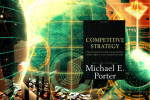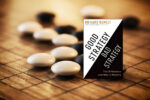What is Business Strategy?

Business strategy determines where and how a company will compete. Strategic market management helps the business cope with change, forces a long-range view, and makes resource allocation decisions visible.
Strategic Market Management by David Aaker
Due to rapid pace of change in the marketplace, strategic planners must be nimble and forward looking. New competitors emerge every day and new technologies disrupt previous approaches and business models. A bad strategic decision today will have costly impacts in the future. In Strategic Market Management David Aaker presents his framework for creating and executing against a strategic vision.
Aaker’s framework begins with internal and external and strategic analysis that yields strengths, weaknesses, opportunities and threats. From this base, strategies are created and implemented. Business leaders cannot rest there–strategies must continually adapt to changing circumstances. Moreover, the selected strategy must be evaluated for feasibility and resourced for success in an environment of rapid change.
Business Strategy Components
Fundamentally, business strategy is determining where and how to compete. Deciding where to compete involves what Aaker calls product-market investment decisions. Allocating resources is a critical strategy decision: which product, service, or customer segment receives funding and which does not?
The scope of a business is defined by the products it offers and chooses not to offer, by the markets it seeks to serve and not serve, by the competitors it chooses to compete with and to avoid, and its level of vertical integration.
In addition to business scope, the company’s growth strategy selection is a key decision point. Aaker uses the Ansoff growth matrix to illustrate the four options: existing market penetration (current products in current markets), product expansion (new products in current markets), market expansion (current products in new markets), and diversification (new products in new markets).
Next, he discusses the Boston Consulting Group matrix which positions products, services, and or business units on a growth/share scale. This ranking leads to proposed future strategies for each business: divest, invest, or harvest.
In addition to the product-market investment decisions above, the how to compete decision includes value proposition, assets and competencies, and functional area strategies and programs. The selected value proposition must be relevant and meaningful to the customer, be sustainable over time; and provide differentiation relative to competitors. Sustainable competitive advantage consists of competencies such as customer relationship management or manufacturing and assets such as a brand or installed customer base. Functional strategies and programs are the specific projects and initiatives that enable the company to execute against the broader business strategy and achieve the vision.
Questions to ask
Once the key questions have been answered, criteria used to select a winning business strategy include:
ROI: Does the return on investment meet the organization’s targets?
Competitive advantage: Can the company create a sustainable competitive advantage?
Future success: Will the strategy survive market dynamics to be successful in the future?
Feasibility: Does the company have the financial and organizational resources to execute the strategy?
Strategic fit: Is there financial and operational fit between all the strategies the company is undertaking?
Mistaking actions for strategy
In this short video Michael Porter describes common mistake in formulating a strategy: confusing actions (initiatives, programs, projects) with strategy. Outsourcing, internationalizing, or consolidating are not strategies. A strategy is “How will we be unique? How will we have an advantage? How will we sustain that advantage over time?” If the end goal is not clear, the company will not know why a specific action has been taken or when to stop taking that action.
Playing to Win
A.G. Lafley, former CEO of Procter and Gamble (mentioned in Aaker’s book) talks about his book Playing to Win: How Strategy Really Works (co-written with Roger L Martin, author of the Design of Business).
Effective business strategies are essentially the choices to win in the marketplace with a very specific group of customers or consumers.
Some people may have a vision, they may have a mission, they may have a plan but they probably don’t have a strategy that answers all five choices.
Or they have a strategy and it’s flawed in some way: they are trying to be all things to all people…and they are not making choices about what is winning or where they are going to play. Or, as importantly where they’re not going to play. How they’re going to win, what are their core competencies, and how they’re going to measure progress.
The fundamental metric of success for business is: am I creating a customer? And am I creating more customers? And are my customers more loyal to me? Do they love my product more? Do they love my service more? Do more of them try me? Do more of them buy me?
Lafley observes that B2B companies tend to be product and engineering driven. These companies need to change their mindset to be more marketing driven and think about how their industry organizes around customer segments and their needs.
When asked about timeless elements of business strategy, Lafley says: positioning relative to other choices the consumer has (the where to play choice and the how to win choice) and your core capabilities that make you different and better.






